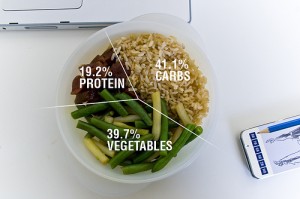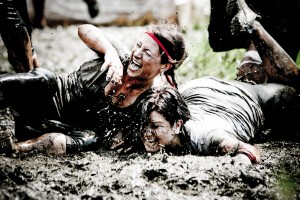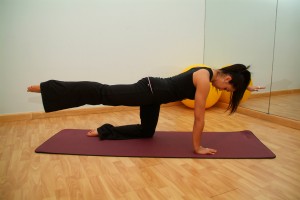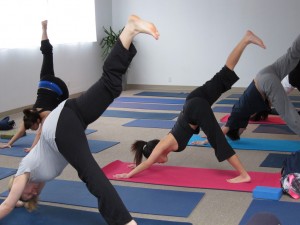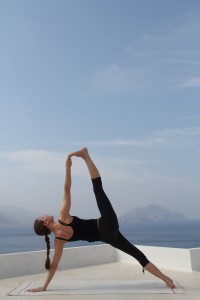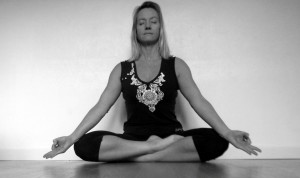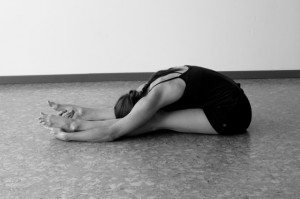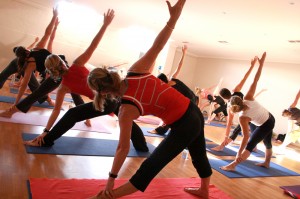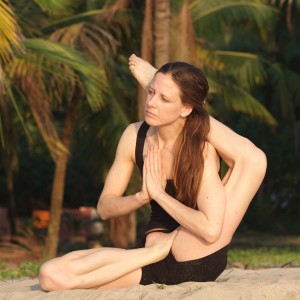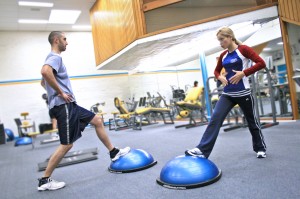During this workout, we are going to be focusing on movement patterns during strength training. There are many different way to categorize weight training exercises: (1) exercises can be categorized based on muscle groups being worked, (2) compound vs. isolation exercises or (3) exercises can be categorized based on movement patterns of the body. I like to focus on number three. Movement patterns are the best way to ensure you are training your entire body. Movement patterns in strength training are based on the natural movements of the body.
MOVEMENT PATTERNS
There are hundreds of different types of exercises in existence, which is why coming up with a workout routine can be so overwhelming. In reality, however, the human body is really only capable of 6 types of movements (with a 7th miscellaneous group that I will explain later):
1. PUSH (HORIZONTAL & VERTICAL)
2. PULL (HORIZONTAL & VERTICAL)
3. QUAD DOMINANT
4. HIP/HAMSTRING DOMINANT
5. ELBOW FLEXION
6. ELBOW EXTENSION
7. MISCELLANEOUS
PUSH MOVEMENTS
A pushing movement is any type of movement where you are pushing a weight away from your body, or where you are using your body as resistance to push it away from something (like the ground). Push movements can be divided into two groups: horizontal push and vertical push. Here are some examples of both:
Horizontal Push

A horizontal pushing exercise is any exercise where you are pushing an external weight away from your body in a straight-ward motion, or where you are pushing your mass away from the ground. A horizontal press tends to emphasize the pectorals or chest muscles. Think push-ups and bench press.
- Push-ups (variations: regular, wide, narrow)
- Bench Press (variations: flat, low incline, decline)
- Chest Flyes (variations: incline, flat, decline)
Vertical Push
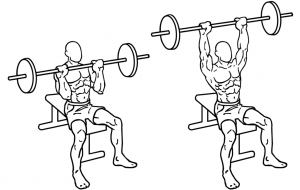
A vertical pushing exercise is any exercise where you are pushing an external weight away from your body in an upward or overhead motion, or where you are pushing your mass away from the ground. A vertical press tends to emphasize the shoulder muscles. Think shoulder press:
- Overhead Shoulder Press (variations: standing or seated)
- Lateral Raises
- Front Raises
- High Incline Bench Press
- Pushups with feet elevated
PULL MOVEMENTS
A pulling movement is any type of movement where you are pulling a weight towards your body, or where you are using your body as resistance to pull it towards an object. Like pushing movements, pull movements can be divided into two groups: horizontal pull and vertical pull. Here are some examples of both:
Horizontal Pull

A horizontal pulling exercise is any exercise where you are pulling an external weight towards your body in a straight-ward motion, or where you are pulling your mass towards an object. A horizontal pull tends to emphasize the back muscles. Think rows.
- Bent Over Back Rows
- Seated Cable Rows
- Single-Arm Back Rows
- Chest Supported Machine Rows
- TRX Body Row
Vertical Pull
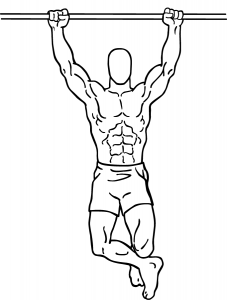
A vertical pulling exercise is any exercise where you are pulling an external weight vertically towards your body in a downward motion, or where you are pulling your mass upwards toward an object. A vertical pull tends to emphasize the latissimus dorsi muscles (lats). Think pull-ups:
- Pull-ups
- Chin-ups
- Lat Pull Downs
QUAD DOMINANT
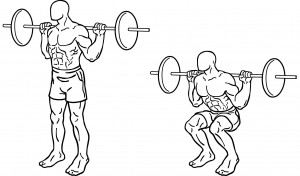
A quad dominant exercise is any type of exercise where your quadriceps are the primary mover. A quad dominant exercise very obviously emphasizes the quadriceps muscles. Think squats.
- Squats
- Front Squats
- Split Squats
- Lunges
- Leg Press
HIP/HAMSTRING DOMINANT

A hip/hamstring dominant exercise is any type of exercise where your hamstrings, quads, or the posterior chain as a whole are the primary mover. A hip/hamstring dominant exercise emphasizes the hamstrings and gluteal muscles. Think deadlifts.
- Deadlifts (all variations)
- Bridges
- Hyperextensions
- Good Mornings
- Leg Curls (standing, seated or lying)
ELBOW FLEXION
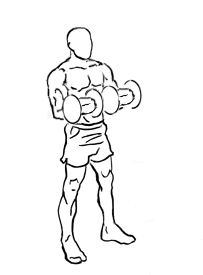
An elbow flexion exercise is any exercise where the elbow joint in being flexing in order to move an external weight towards the body. An elbow flexion exercise tends to emphasize the bicep muscles. Think biceps curls.
- Biceps Curls (standing/seated)
- Cable Curls
- Preacher Curls
ELBOW EXTENSION
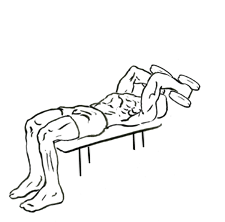
An elbow extension exercise is any exercise where the elbow joint is being extended in order to move an external weight away from the body. Elbow extension exercises tends to emphasize the tricep muscles. Think triceps extension.
- Laying Triceps Extension
- Overhead Triceps Extension
- Triceps Cable Press-downs
- Overhead Triceps Cable Extensions
- Tricep Kickbacks
MISCELLANEOUS
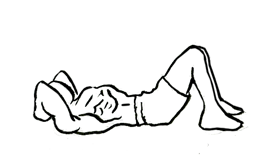
The movements that fall into the miscellaneous group are other movements that (1) don’t fall into any of the other categories and (2) don’t need to be emphasized as much as the other movements. The other movements, especially the first two, should be paid stark attention to in any weight training program. These miscellaneous movements may or may not be added in. This category includes exercises such as calf raises, rotation/twisting movements, ab exercises, rotator cuff work, etc.
WHY ARE MOVEMENT PATTERNS IMPORTANT?
As mentioned above, movement patterns are movements that are natural for the human body to perform. It is imperative to highlight at least one exercise from every movement pattern (or at least the first 2 categories aka push/pull) into your workout routine in order to ensure proper strength training, progress, and symmetry in your overall body composition. The simplest way to come up with a full body routine is to pick one exercise from each category.
THE ROUTINE
This routine is a full-body weight training routine utilizing the push/pull movements. It is perfect for beginners as it is very basic and includes all of the big compound exercises which are the foundation to any well-developed strength training routine. This routine would produce the best results if it were performed three times per week. This routine is not a one-time workout. You may use it for however long as you are seeing results! Don’t be afraid to up the weight once it starts feeling easier.
The amount of weight you use is based upon your body. You should be able to perform the minimum number of reps without being able to exceed the maximum amount of reps. If you cannot complete the minimum amount of reps then your weights are probably too heavy. Likewise, if you can do even just two or three more than the maximum amount of reps then your weight is likely too light.
You will perform this routine by executing the first exercise for the prescribed amount of reps. You will rest for 1-2 minutes, then perform that same exercise again for a total of 3 sets. Once you have completed 3 sets of the first exercise, you will move onto the next exercise and repeat the process.
*Note there are two workouts here. The first version is a beginners full/body workout utilizing just the push/pull movements. This workout may seem short and sweet, but I promise it will produce results. The second workout is an extended version where I have utilized all movement categories rather than just push/pull. This version is great for those who are still considered beginners but who have mastered form and technique and who have already been successful with the first version.
I have pasted some links at the bottom of the page in order to show you what some of less well-known exercise should look like.
Version 1: Full Body Push/Pull Routine
1. Squats (Quad Dominant): 3 set of 8-10 reps
2. Push-ups (Horizontal Push): 3 sets of 8-10 reps
3. Back Rows (Horizontal Pull): 3 sets of 8-10 reps
4. Deadlifts (hip/hamstring dominant): 3 sets 8-10 reps
5. Assisted Pull-Ups (or Lat Pull-Downs) (Vertical Pull): 3 sets of 8-10 reps
6. Overhead Shoulder Press (Vertical Push): 3 sets 8-10 reps
Version 2: Full Body Extended Routine
1. Squats (Quad Dominant): 3 set of 8-10 reps
2. Push-ups (Horizontal Push): 3 sets of 8-10 reps
3. Back Rows (Horizontal Pull): 3 sets of 8-10 reps
4. Tricep Kickbacks (Elbow Flexion): 3 sets of 10-12 reps
5. Calf Raises (miscellaneous): 3 sets of 10-12 reps
6. Deadlifts (hip/hamstring dominant): 3 sets 8-10 reps
7. Assisted Pull-Ups (or Lat Pull-Downs) (Vertical Pull): 3 sets of 8-10 reps
8. Overhead Shoulder Press (Vertical Push): 3 sets 8-10 reps
9. Biceps Curls (elbow flexion): 3 set of 10-12 reps
10. Crunches (Miscellaneous): 3 sets of 10-12 reps
VIDEOS
Back Rows – https://www.youtube.com/watch?v=QFq5jdwWwX4
Triceps Kickbacks – https://www.youtube.com/watch?v=mGwUy_JFM54
Deadlifts – https://www.youtube.com/watch?v=5N3yn4JUozI
Assisted Pull-ups – https://www.youtube.com/watch?v=rgulY7UkwIs




